Last updated: February 16, 2024
Did you know the dun color pattern graces a variety of horse breeds? Growing up surrounded by Quarter Horses, I once believed this color was exclusive to them. Imagine my surprise when I learned that the dun’s distinctive color pattern is found in an array of other breeds as well.
In this article, we’ll delve into the breeds with this unique equine color pattern, uncovering the genetics behind it and the rich narratives that accompany its existence. Join me on a journey to discover dun horse breeds.
Norwegian Fjord Horse
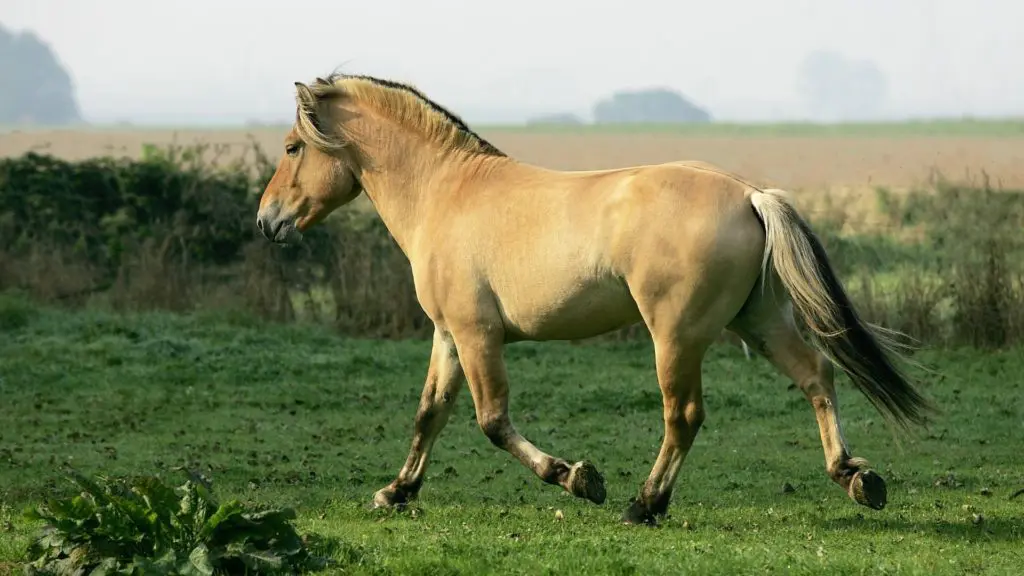
Norwegian Fjord Horses are sturdy, compact, and robust, sporting a distinct and magnificent dun color almost exclusively. This breed typically showcases a strong, arched neck, powerful body, and a distinctive upright mane, often cut to stand erect, highlighting their bold dorsal stripe.
Temperament and Suitability for Various Riders
Renowned for their gentle disposition and remarkable intelligence, Fjords make fantastic companions for riders of all ages and abilities. Their calm demeanor and willingness to work endear them to novice and experienced equestrians alike.
Uses and Disciplines
Historically, Fjords have been utilized in farming due to their strength and resilience. Today, they excel in various equestrian disciplines like dressage, driving, and therapeutic riding, showcasing their versatility and adaptability.
American Quarter Horse
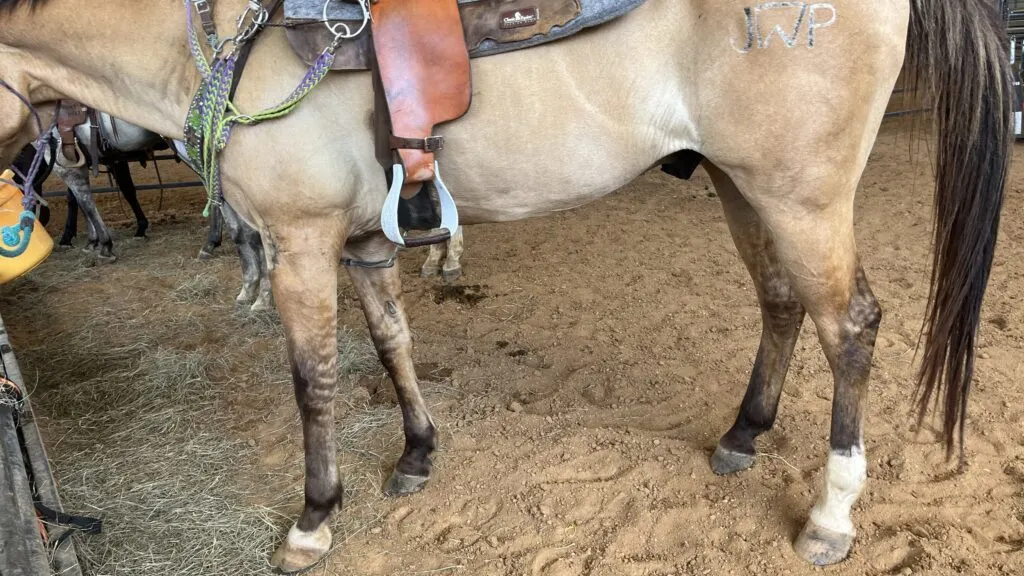
American Quarter Horses often boast a splendid dun coloration among their varied palette. Known for their muscular build, short, stocky stature, and powerful hindquarters, these horses are speed and agility incarnate.
Temperament and Suitability for Various Riders
Characterized by a docile, intelligent, and people-oriented nature, American Quarter Horses are well-suited to riders and trainers across the spectrum, embracing beginners with tolerance and experts with capability.
Uses and Disciplines
Celebrated for their prowess in rodeo events, reining, and cutting, Quarter Horses are also beloved trail and pleasure-riding companions, demonstrating versatility in both competitive and recreational spheres.
Highland Pony

The Highland Pony, with its often dun-colored, sturdy, and well-boned structure, emanates strength and hardiness. With a thick mane and tail and often sporting “feathers” (long hair) on their legs, they are well-adapted to the harsh Scottish climate from which they hail.
Temperament and Suitability for Various Riders
Docile, intelligent, and patient, Highland Ponies are superb for novice riders yet equally adept with experienced equestrians, offering a steady and reliable ride or drive.
Uses and Disciplines
Traditionally used for deer stalking and agricultural work, Highland Ponies now participate in driving, endurance, and even dressage, illustrating their multifaceted skill set.
Icelandic Horse
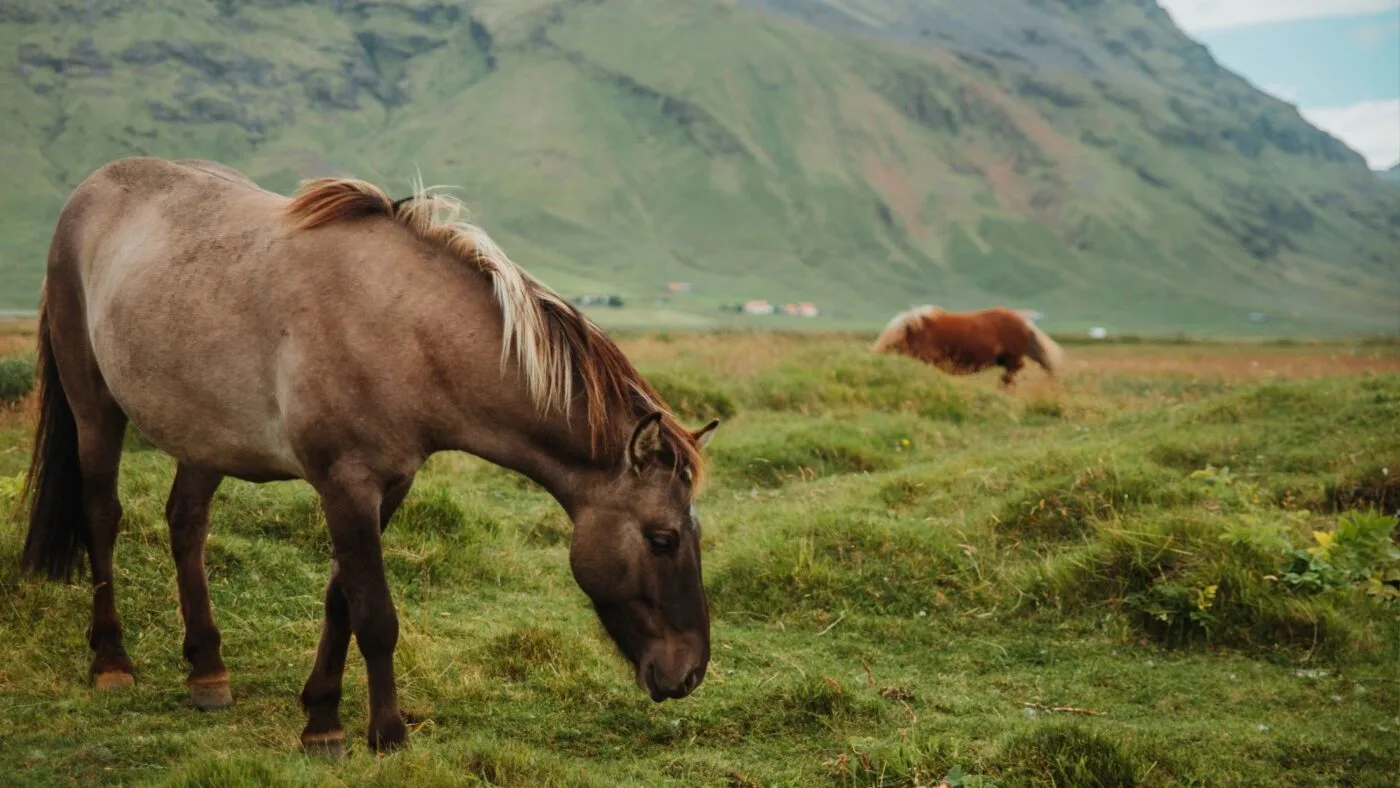
The Icelandic Horse, often showcasing beautiful dun hues, is small, long-lived, and remarkably sturdy, with a double coat for protection against harsh climates.
Temperament and Suitability for Various Riders
Known for their friendly, adaptable, and intelligent nature, Icelandic Horses offer a pleasant riding experience for all, with a special gait, the tölt, providing a notably smooth ride.
Uses and Disciplines
Originally a multi-purpose farm horse, the Icelandic is now cherished for pleasure riding and competition, especially in tölt and four-gaited competitions, due to its unique gaits.
Other Noteworthy Dun Breeds
Andalusian
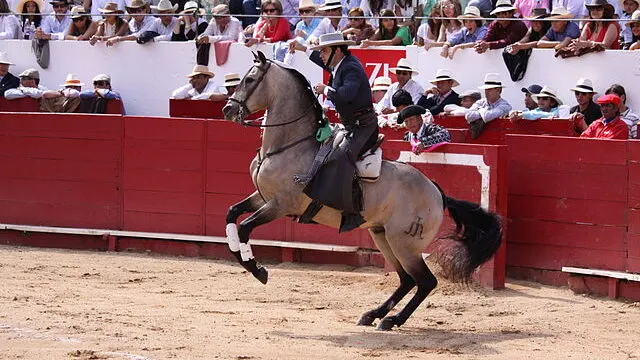
An elegant and athletic breed, Andalusians occasionally present the dun factor, melding grace, and this distinct coloration beautifully.
Lusitano
Lusitanos, while more commonly seen in grays and bays, can also exhibit the enchanting dun color, adding an extra layer to their spirited yet amiable nature.
As we navigate through these breeds, each holding the dun factor close to their genetic tapestry, we witness a beautiful interplay of history, function, and the quiet allure of the dun color weaving through generations of equine majesty.
From the gentle Fjord to the speedy Quarter Horse, the dun factor graces various breeds with its mystical charm, navigating through history and into the hearts of horse enthusiasts worldwide.
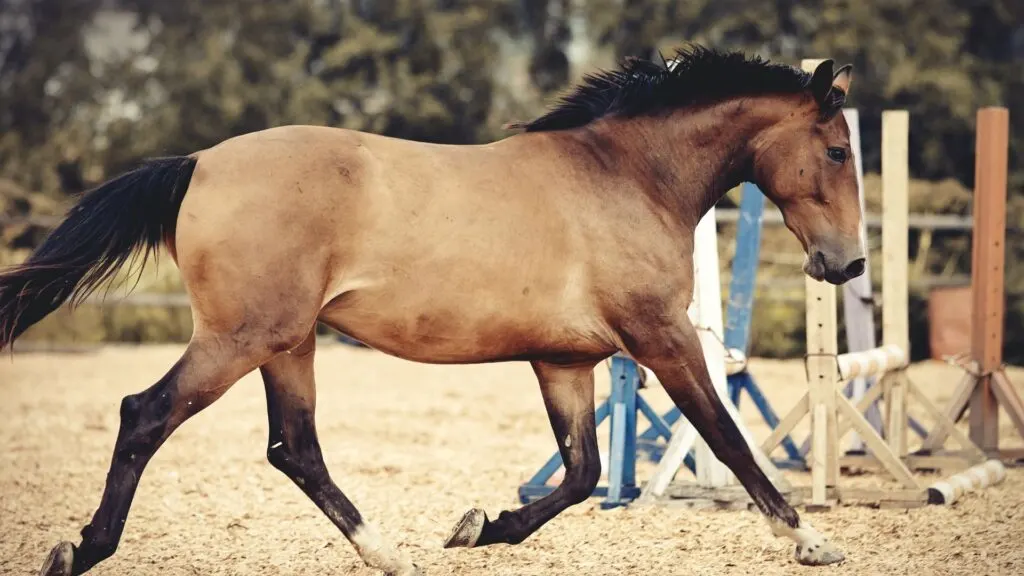
Characteristics of Dun Horses
When we speak of dun horses, we’re painting a picture with a wide brush because dun coloration spans a vibrant spectrum. The base color of a dun horse can range from a pale, creamy hue to a rich, golden brown and even extend to a silvery, bluish shade.
Each variation brings its own charm, but all share a common trait: a lighter body color compared to their mane, tail, and primitive markings. These unique, earthy colors are captivating, offering a visual warmth and depth that has enchanted equine admirers for centuries.
Primitive Markings
A signature of the dun factor is the presence of “primitive” markings. These are darker, often black or dark brown, and can manifest in a few different forms. The most common marking is the dorsal stripe: a dark line that runs along the horse’s back, from the mane to the tail.
Many dun horses also have zebra stripes—dark bands that wrap around their legs. Occasionally, some duns may exhibit shadowy marks on their shoulders or even a dark mask on their faces, adding to their mystical appearance.
Genetic Inheritance of the Dun Factor
The dun gene is dominant, meaning that only one parent needs to carry the gene to potentially pass the coloration to their offspring. If one parent is dun-colored and the other is not, the foal has a 50% chance of inheriting the dun factor.
When both parents exhibit the dun factor, the probability leaps to 75% or higher. This genetic predictability has allowed breeders to selectively breed for dun coloration, perpetuating the lineage of these beautifully adorned horses.
Similar Equine Colorations
Navigating through the world of equine coloration can sometimes be confusing, especially with the existence of color patterns that resemble the dun. One such look-alike is the “buckskin” coloration, which also features a light body with a darker mane and tail but lacks the defining primitive markings of the dun.
Another similar coat is the “grullo” (or grulla), which presents a smoky, mousey color, often mistaken for a dun due to the common presence of a dorsal stripe. However, true dun coloration is defined by the combined presence of a lightened coat and the striking primitive markings.
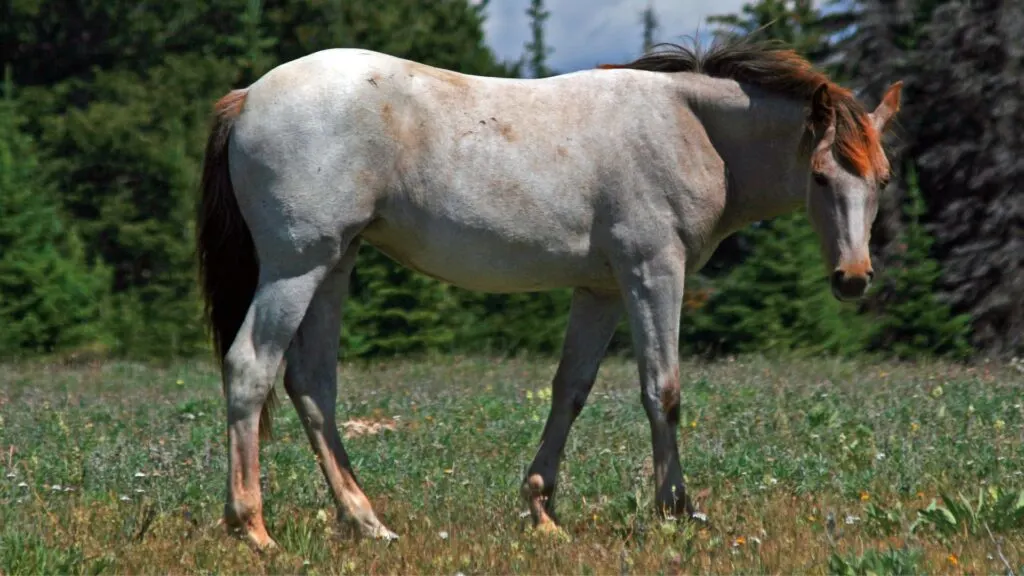
Dun Factor Beyond Aesthetics
The dun coloration, while physically captivating, has seeped far beyond the mere visual, embedding itself deeply into cultural narratives and symbolic representations across numerous societies.
In Native American cultures, Norse traditions, and many societies across the globe, the dun horse has not merely been a partner in labor and travel but a symbolic entity, an embodiment of various meanings and stories.
This relationship can also be seen in the naming practices related to dun horses. In several cultures and societies, horses were often given names that reflected their physical attributes, innate abilities, or desired traits.
For a dun horse, names might illuminate their earthy, golden hues or reference the wild, spirited landscapes they conjure in our imaginations. Whether it’s “Golden Spirit,” “Desert Storm,” or names borrowed from nature like “Amber” or “Sahara,” naming a dun horse often becomes a nod to its splendid coloration, ancient legacy, and the powerful symbolism that has trotted through time alongside it.

FAQs about Dun Horse Breeds
What is a dun horse?
A dun horse is characterized by its unique coat color, which includes a range of shades from golden to mousey gray, and distinctive “primitive” markings such as a dorsal stripe, leg barring, and sometimes shoulder stripes.
How is the dun color pattern inherited?
The dun color pattern is inherited through a dominant gene known as the Dun gene (D). A horse only needs one copy of the Dun gene from either parent to display the dun coloration and its associated primitive markings.
Are all dun horses the same color?
No, dun horses can vary significantly in color based on their base coat color affected by the Dun gene. Common variations include bay dun (also known as zebra dun), red dun, and grullo (or blue dun), among others.
Can any horse breed be dun?
While the dun color pattern can occur in many horse breeds, it is more prevalent in some breeds than others. Breeds known for having dun individuals include the Quarter Horse, Norwegian Fjord, Mustang, and Highland Pony, to name a few.
What are “primitive” markings on a dun horse?
Primitive markings refer to the darker lines and shapes that appear on a dun horse’s coat. These typically include a dorsal stripe running along the spine, horizontal stripes on the legs (leg barring), and sometimes a transverse stripe over the shoulders.
Is a buckskin horse the same as a dun?
No, while buckskin and dun horses may appear similar in color, they are genetically different. Buckskins lack the Dun gene and do not have the primitive markings typical of dun horses. Buckskins result from the cream dilution gene acting on a bay base coat.
Conclusion: Dun Horse Breeds
The dun factor is more than just a gene; it’s a living piece of history and a symbol of the deep connection between humans and horses. As we move forward, understanding genetics helps us make better choices for breeding and preserving these unique colors.
It’s up to us, along with breeders and horse lovers, to keep this special trait thriving for future generations. Looking at a dun horse, we’re reminded of the long journey these animals have shared with us, and it’s our job to ensure they continue to do so, blending the past with our hopes for the future.
